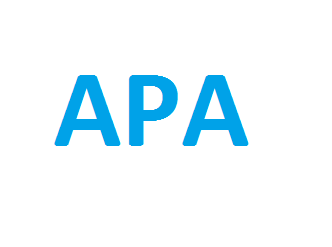
The Academic Perspective Procedia publishes Academic Platform symposiums papers as three volumes in a year. DOI number is given to all of our papers.
Publisher : Academic Perspective
Journal DOI : 10.33793/acperpro
Journal eISSN : 2667-5862
Olay İlintili Potansiyeller Üzerinden Dikkatin Hu Momentleri Yardımıyla Tespiti
Turgay Batbat;Aysegul Guven;Nazan Dolu
1107
459
Abstract
Uyaran tipine göre dikkatin farklılık göstermesi eğitim ve artırılmış gerçeklik gibi birçok konuda önemli bir yer tutmaktadır. Oluşan farklılıkların tespiti için 26 kişilik katılımcı grubuna, görsel ve işitsel uyaranlarla oluşturulan iki deney uygulanmıştır. Elde edilen EEG sinyaller Fz, Cz, Pz ve Oz kanallarından kaydedilmiştir. Hu momentleri literatürde görüntüler üzerinde kullanılan yeni ve popüler özelliklerdir. Bu özelliklerin fizyolojik sinyallerde kullanılabilirliği bu çalışma ile incelenmiştir. Bu amaçla 15er uyaran cevabı alt alta dizilmiş ve gri seviyeli resme dönüştürülmüştür. Elde edilen görüntülerden yedi Hu momenti hesaplanmıştır. Paired sample t testi ile uyaran tipi üzerinden karşılaştırılmışlardır. Standart uyaranlarda Fz kanalında 1, 2, 7; Cz kanalında 3,4 ve 7; Pz kanalında 1, 2; Oz kanalında 7 ve hedef uyaranlarda Cz kanallarında 3,4,5,7; Pz kanalında 3, 4, 6, 7; Oz kanalında tüm momentlerde anlamlı bir fark görülmüştür. Elde edilen sonuçlar ışığında hu momentlerinin belirtilen yaklaşımla sinyallerde başarılı bir şekilde kullanılabileceği görülmüştür.
Keywords:
Event related potentials, attention, hu moments, signal processing
References
[1] R.J. Sternberg, K. Sternberg, Cognitive Psychology, 6th ed., Cengage Learning, 2011.doi:2010935207.
[2] S.M.D. Brucki, R. Nitrini, Cancellation task in very low educated people, Arch. Clin.Neuropsychol. 23 (2008) 139–147. doi:10.1016/j.acn.2007.11.003.
[3] M. Hansenne, Le potentiel evoque cognitif P300 (I)?: Aspects theorique et psychobiologique,Neurophysiol. Clin. 30 (2000) 191–210. doi:10.1016/s0987-7053(00)00223-9.
[4] M.-C. Ho, T.-C. Chen, C.-F. Huang, C. Yu, J. Chen, R. Huang, H. Ho, C. Liu, Detect ADPatients by Using EEG Coherence Analysis, J. Med. Eng. 2014 (2014) 1–5.doi:10.1155/2014/236734.
[5] J. Kortelainen, E. Väyrynen, U. Huuskonen, J. Laurila, Using Hilbert-Huang Transform toAssess EEG Slow Wave Activity During Anesthesia in Post-Cardiac Arrest Patients, (2016)1850–1853.
[6] R.J. Oweis, E.W. Abdulhay, Seizure classification in EEG signals utilizing Hilbert-Huangtransform., Biomed. Eng. Online. 10 (2011) 38. doi:10.1186/1475-925X-10-38.
[7] S. Mariani, A.F.T. Borges, T. Henriques, R.J. Thomas, S.J. Leistedt, J. Lanquart, A.L.Goldberger, M.D. Costa, Analysis of the Sleep EEG in the Complexity Domain, (2016)6429–6432.
[8] H.U. Amin, A.S. Malik, R.F. Ahmad, N. Badruddin, N. Kamel, M. Hussain, W.-T. Chooi,Feature extraction and classification for EEG signals using wavelet transform and machinelearning techniques, Australas. Phys. Eng. Sci. Med. 38 (2015) 139–149.doi:10.1007/s13246-015-0333-x.
[9] Ö.Ş. Şenel, A. Gölgeli, A. Küçük, C. Süer, Ç. Özesmi, İlköğretim ÖğrencilerindeElektrofizyolojik Ölçümler Ve Nöropsikolojik Testlerle Bellek / Öğrenme / Başarıİlişkisinin Araştırılması, Heal. (San Fr. 13 (2004) 39–45.
[10] E. Genç, N. Yagişan, E. Apaydin Dogan, B. Oguz Genç, Effect of musical training onauditory event related potentials N200 (mismatch negativity) and P300, Turkiye Klin. J.Med. Sci. 29 (2009) 104–109. doi:10.1016/S0165-0327(02)00016-2.
[11] M. Japundza-Milisavljevic, D. Macesic-Petrovic, A. Djuric-Zdravkovic, Attention andsocial behavior of children with intellectual developmental disabilities, Procedia - Soc.Behav. Sci. 5 (2010) 41–44. doi:10.1016/j.sbspro.2010.07.047.
[12] G. Akhan, S. Çalışkan, H. Karaca, Sağlıklı kişilerde cinsiyetler arasında görsel uyarılmışpotansiyellerin karşılaştırılması, (1995).
[13] T. Wilaiprasitporn, T. Yagi, Motion-Modulated and Complexity-Modulated AttentionEffects on Visual Evoked Potential P300: Applications for P300-Based Brain-ComputerInterfaces, IEEJ Trans. Electron. Inf. Syst. 135 (2015) 826–831.doi:10.1541/ieejeiss.135.826.
[14] M. Kuniecki, J. Pilarczyk, S. Wichary, J. Kuniecki Michaland Pilarczyk, S. Wichary, Thecolor red attracts attention in an emotional context. An ERP study., Front. Hum. Neurosci.9 (2015) 212. doi:10.3389/fnhum.2015.00212.
[15] S.J.E.E. Langeslag, J.R. Olivier, M.E. Köhlen, I.M. Nijs, J.W. Van Strien, Increasedattention and memory for beloved-related information during infatuation: behavioral andelectrophysiological data., Soc. Cogn. Affect. Neurosci. 10 (2015) 136–144.doi:10.1093/scan/nsu034.
[16] T. Batbat, A. Güven, N. Dolu, Evaluation of the Effects of Stimulus Types over AttentionBased on Hjorth Parameters with Electroencephalography, in: Eur. Conf. Sci. ART Cult.,Antalya, 2018: p. 138.
[17] P. Sharma, A. Baral, Galaxy Classification Using Neural Networks: A Review, ICALIP2018 - 6th Int. Conf. Audio, Lang. Image Process. (2018) 179–183.doi:10.1109/ICALIP.2018.8455426.
[18] M.J. Cheok, Z. Omar, M.H. Jaward, A review of hand gesture and sign language recognitiontechniques, Int. J. Mach. Learn. Cybern. 10 (2019) 131–153. doi:10.1007/s13042-017-0705-5.
[19] M.M.H. Ali, V.H. Mahale, P.L. Yannawar, A.T. Gaikwad, A Review: PalmprintRecognition Process and Techniques, Int. J. Appl. Eng. Res. 13 (2018) 7499–7507.http://www.ripublication.com.
[20] J. Zunic, P.L. Rosin, V. Ilic, Disconnectedness: A new moment invariant for multicomponent shapes, Pattern Recognit. 78 (2018) 91–102. doi:10.1016/j.patcog.2018.01.010.
[21] X. Hong, J. Sun, J.J. Bengson, G.R. Mangun, S. Tong, Normal aging selectively diminishesalpha lateralization in visual spatial attention, Neuroimage. 106 (2015) 353–363.doi:10.1016/j.neuroimage.2014.11.019.
[22] M.-K.K. Hu, Visual Pattern Recognition by Moment Invariants, IRE Trans. Inf. Theory. 8(1962) 179–187. doi:10.1109/TIT.1962.1057692.
[23] M.K. Hu, Visual Pattern Recognition by Moment Invariants, IRE Trans. Inf. Theory. 8(1962) 179–187. doi:10.1109/TIT.1962.1057692.
Cite
-
 %0 Academic Perspective Procedia (ACPERPRO) Olay İlintili Potansiyeller Üzerinden Dikkatin Hu Momentleri Yardımıyla Tespiti% A Turgay Batbat , Aysegul Guven , Nazan Dolu% T Olay İlintili Potansiyeller Üzerinden Dikkatin Hu Momentleri Yardımıyla Tespiti% D 11/22/2019% J Academic Perspective Procedia (ACPERPRO)% P 553-562% V 2% N 3% R doi: 10.33793/acperpro.02.03.48% U 10.33793/acperpro.02.03.48
%0 Academic Perspective Procedia (ACPERPRO) Olay İlintili Potansiyeller Üzerinden Dikkatin Hu Momentleri Yardımıyla Tespiti% A Turgay Batbat , Aysegul Guven , Nazan Dolu% T Olay İlintili Potansiyeller Üzerinden Dikkatin Hu Momentleri Yardımıyla Tespiti% D 11/22/2019% J Academic Perspective Procedia (ACPERPRO)% P 553-562% V 2% N 3% R doi: 10.33793/acperpro.02.03.48% U 10.33793/acperpro.02.03.48
© Academic Perspective 2018. All rights reserved.




